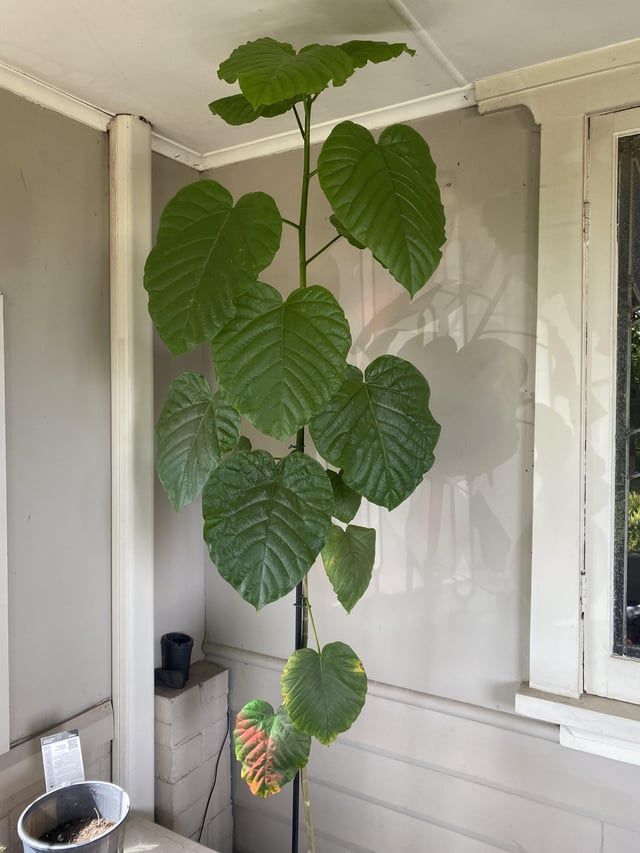Mastering the Art of Pruning: How to Keep Your Ficus Umbellata Looking its Best
The best time to prune your Ficus Umbellata is during the growing season, from April to September. This is when the temperature is ideal for the plant, around 20-30°C.

Are you the proud owner of a beautiful Ficus Umbellata plant but struggling to keep it looking its best? If so, pruning may be the solution you've been looking for.
Ficus Umbellata, also known as the fig umbrella tree, is a popular indoor plant known for its large, heart-shaped leaves. However, without proper care and pruning, it can quickly become overgrown and lose its aesthetic appeal. In this blog post, we'll explore why pruning your Ficus Umbellata is crucial for maintaining its health and beauty.
From controlling its growth to improving sunlight and ventilation, we'll break down the top reasons why you need to prune your Ficus Umbellata. So, grab your pruning shears and let's get started!
When it comes to keeping your Ficus Umbellata healthy and looking its best, pruning is an essential task that you can't afford to overlook.
Here are three key reasons why pruning your Umbellata is so important:
- Shape and appearance: One of the main reasons to prune your Umbellata is to control its shape and appearance. As a fast-growing plant, Umbellata has a tendency to grow as much as it wants (up to 20 to 30 cm in a year), and if left unpruned, it can quickly become unruly and unattractive.
- Sunlight and ventilation: Another important reason to prune your Umbellata is to ensure that it gets enough sunlight and ventilation. As the leaves grow larger, they can block sunlight from reaching the lower leaves, which can cause them to yellow and drop off. Yes, the leaves are that sensitive.
- Pest control: Finally, pruning your Umbellata can help to reduce the risk of pests and diseases. As the leaves grow larger and the plant becomes more dense, the environment becomes more favorable for pests to breed.
Best time to prune Umbellata

The best time to prune your Ficus Umbellata is during the growing season, from April to September. This is when the temperature is ideal for the plant, around 20-30°C. Pruning during this time allows for new shoots to grow steadily after pruning.
It's important to note that pruning at any other time may weaken the plant, as Umberata does not tolerate the cold well.
Tools for pruning your Ficus Umbellata plant
Before you get started you need to make sure you have the right tools, these include:
- Pruning shears: These are a must-have for cutting back the branches of your Umbellata. They are sharp and precise, allowing you to make clean cuts without damaging the plant.
- Gloves: When you cut a branch of the Umbellata, sap will come out from the cut end. To avoid getting this sap on your hands and potentially staining your clothes, it's best to wear gloves.
- Healing agent: Depending on the size of the cuts you make, it may be helpful to have a healing agent on hand to help the plant seal the wound and prevent disease.
- Trash bags: After pruning, you'll want to dispose of the cut branches, so having a few trash bags on hand will make cleanup a breeze.
- Old Newspaper/ Cardboard and Used clothes: You need something to protect your floors + the clothes you'll be wearing.. unless you plant to nude prune... get it?
How to prune Umbellata
When pruning your Umberata, it's important to first envision your desired tree shape. The leaves closest to the pruned or growth point will grow into branches, so consider where you want those new branches to sprout.
To achieve your desired tree shape, make a cut on the main trunk at the desired height, leaving about 1cm above the node, stem or growing point as this will encourage new growth.
Step 1: Prune away any dead or diseased branches. These branches will not recover and can spread disease to the rest of the plant. Cut these branches as close to the base as possible. Also remove leaves that are showing signs of wilting, yellowing, or browning, as well as leaves that are growing too close together.
Step 2: Clean with healing agent. When pruning, the sap that may ooze out from the cut branches can be easily wiped away and left to dry. Once you've finished pruning, apply a healing agent to the cuts to help prevent disease and promote healing.
Step 3: Adequate lighting. After pruning, place the plant in a well-lit area with partial shade and observe its condition for a week. Keep in mind that due to the reduced number of leaves, water absorption may slow down. It is important to ensure the soil is dry before watering instead of sticking to your regular watering schedule.
WARNING: Be Careful When Pruning Your Umberata!
One of the most important things to keep in mind is to avoid touching the sap that comes out of the cuts made during pruning. This sap can cause skin irritation, so it is essential to wear gloves at all times.
Additionally, it is also important to disinfect your scissors before pruning as germs can easily enter through the cuts. And you don't want that to happen!
Finally, learn to be patient for pruning season. If you prune this plant at the wrong time, it will lead to its demise. So it is crucial to stick to the recommended pruning schedule to avoid any fatal mistakes.